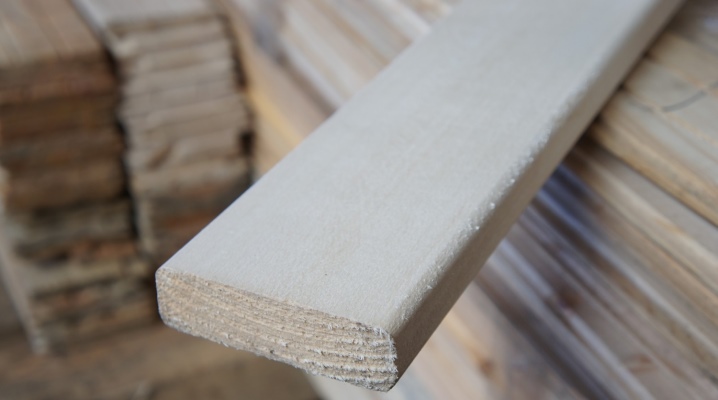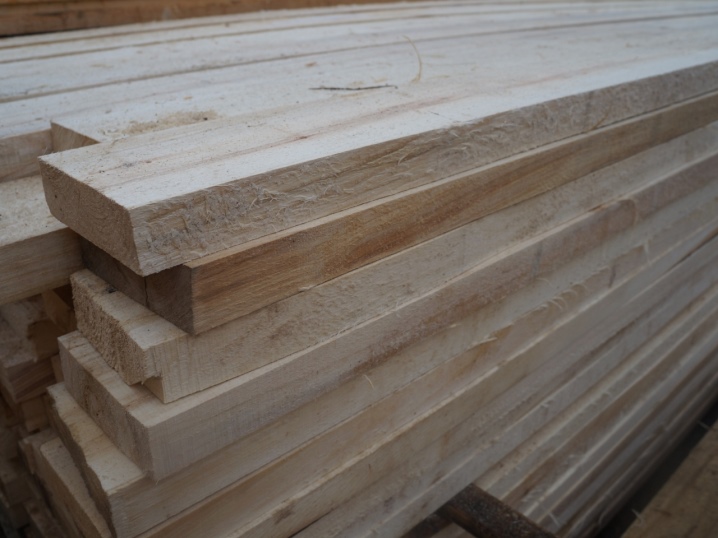All about aspen boards

On the market of modern sawn timber, aspen beams or planks are not often found, since the demand for these products is low.... Construction craftsmen undeservedly ignore this material, but aspen, unlike many other, more valuable species, has unique properties of strength and resistance to decay. In the old days in Russia, it was from aspen that log houses of baths, wells were made, cellars were strengthened and peeled shingles were used for arranging the roof. Spoons, buckets, buckets are traditionally made from aspen to this day. The high resistance to moisture and the density of the material make it possible to use aspen in construction, but in order for the result of such a construction to be reliable, you need to know how to choose and prepare aspen lumber correctly.

Advantages and disadvantages
Aspen boards have a high degree of hygroscopicity, so this raw material is an excellent option for building or finishing a bath, sauna, and can also be used in house building... Aspen wood, like all other lumber, has its pros and cons.

The main advantages of an aspen board or timber include the following.
- Reliability and long service life. If the aspen blank was properly sawn and dried with high quality, then over time the wood of this hardwood becomes denser, and craftsmen often compare it with monolithic concrete.
- Resistant to humid environments. In contact with water or in conditions of high humidity, unlike other tree species, aspen is not prone to rapid decay, since its fibers contain a natural antiseptic.
- The wood does not emit tar. Moisture-resistant aspen wood sheet does not contain resinous components, which come out after finishing.

For this reason, baths or other aspen buildings do not require additional costs for interior decoration.
- Environmental friendliness and aesthetics. Aspen lumber has a pleasant smell, in addition, buildings and products look solid and attractive.
- Budget cost. Unedged aspen board is cheap compared to other lumber. A cubic meter of such material costs about 4500 rubles.
- Natural antiseptic. People have long noticed that wells built of aspen have positive properties - water does not bloom in them, and the frame itself does not rot and mold.

In addition to its positive qualities, aspen still has some disadvantages. They are as follows.
- The tree species grows in areas rich in moisture. For this reason, a mature tree often has a core that has naturally rotted. When processing such a workpiece, the rotten part has to be discarded, and only the apical part remains for further use. Thus, 1/3 or 2/3 of the aspen log goes to waste.
- Since most of the harvested aspen raw materials go to waste, and the yield of high-quality sawn timber is small, this increases the cost of timber and boards.
- Due to the high humidity, drying aspen wood requires a qualified approach to this process. Material shrinkage at the outlet of the drying chamber can reach 18-20%. In addition, 50-80% of the total mass of the material undergoes warpage and cracking during the drying process.Thus, high-quality material from aspen at high costs for its processing is obtained in small quantities.

Main characteristics
WITHthe properties of aspen are explained by its constitution: the structure of the wood has a nuclear-free structure, the type of which is referred to as scattered-vascular. Aspen has a light greenish-white shade of wood. The texture of the material is not pronounced, its growth rings are not very visible, but, despite its inexpressiveness, it creates the effect of uniform silkiness and therefore looks attractive, although this material is not used for decorative finishing.

The wood of this deciduous species is uniform, and if you look at the saw cut of a log, then at 1 cm² you can see at least 5-6 annual rings. The density of the material is about 485-490 kg / m² with a moisture content of 12%
Fresh aspen shows itself to be soft during processing, but its strength is high, and over time the material gains density and becomes monolithic.

The physical parameters of aspen wood are as follows:
- the static bending strength of the material is 76.6 MPa;
- compression index of wood fibers in the longitudinal direction - 43 MPa;
- fiber stretching level - 119 MPa;
- material viscosity - 85 KJ / m²;
- end face hardness - 19.7 N / Kv mm;
- tangential equivalent hardness - 19.4 N / Kv mm;
- radial equivalent hardness - 18.8 n / kv mm.

Sawed aspen has a moisture content of 80-82%, during drying, the shrinkage of the material is negligible, therefore this breed is classified as a medium-drying type. Aspen wood has good resistance to physical stress, and if we compare it with conifers, then aspen is not inferior to them in its flexibility, even with a long-term application of efforts.
Aspen material is considered to be very resistant to abrasion loads, fresh wood lends itself easily during carving and when processing on turning equipment.

The homogeneity of the fiber structure makes it possible to cut workpieces in any desired direction. In addition, such blanks contain a small number of knot elements.
Species overview
Aspen board or timber is most often used in the construction industry. When sawing, it is harvested in the form of a bar, planks, round timber, is used for the production of chipboard-type boards, and also a peeled veneer is made. Dry aspen lath is used for the manufacture of packaging containers for transporting or storing goods.

There are 2 variants of blanks.
- Trim... Sliced wood in the form of an edged board is the most demanded building material and is marked as grade 1. Such a workpiece is resistant to moisture and has a long service life. It is used to decorate a sauna or bath.
Thanks to aspen with its high thermal conductivity, the walls do not heat up much, do not emit tar and do not burn when touched.

In appearance, the finish looks expensive and practical. The common sizes of edged aspen boards are: 50x150x6000, 50x200x6000, as well as 25x150x6000 mm.
- Unedged... The version of the unedged board differs from the edged analogue in that the bark is not removed at the edges of this material, therefore, blanks of this type have an unattractive appearance, but at the same time retain all the properties and characteristics of aspen wood, as well as edged boards. The cost price of workpieces processed only on two sides is significantly lower than that of the cut type; in addition, the unedged type of processing allows you to get much more lumber and reduce labor costs for such production.

Unedged aspen board has become a popular material used for rough construction work.
How to choose the right boards?
When choosing aspen lumber, it is recommended to pay attention to the following parameters:
- cutting the workpieces along the grain direction is more resistant to warpage;
- the material with the least amount of knots is of higher quality;
- there should be no cracks, stains, signs of decay or changes in the uniformity of wood color on the board;
- the moisture content of the board should not exceed 18%.

Buying quality lumber allows you to reduce the amount of waste, since culling in this case will be minimal, which means it will save you money.
Application
The most common use of aspen can be seen in the construction of baths and saunas.... A log house for a bath is made of aspen beams, and all interior decoration is done with an aspen board. Even in cases where the bath or sauna is built from other materials, aspen is used for sheathing and for the shelf in the steam room. The shelf aspen board is not subject to decay and has a long service life.

Often, interior wooden partitions are made of aspen, which can be painted, pasted over with finishing materials, sheathed with a batten or plastered. On outdoor terraces, on verandas and in gazebos, aspen boards are used as flooring.
Aspen is used as a finishing material for the manufacture of plinths, fillets, platbands for doors or windows.















The comment was sent successfully.